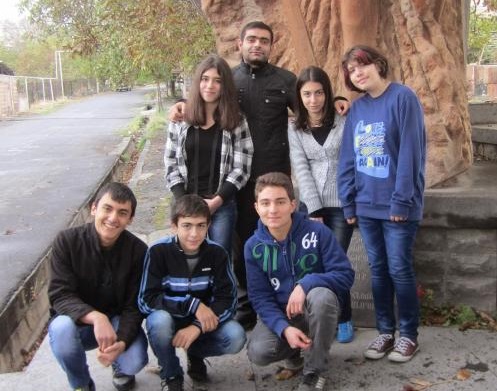Author: Vahram Toqmajyan
Translator: Yura Ganjalyan
A French medieval saying: “The past reminds, the present flees, the future frightens”.
This brief description is devoted to educational trips and their organization as a bright environment of informal education. Do not misunderstand me; I am not challenging to create any new method, a practice which seems to be too widespread nowadays.
Let’s stick to the main point. It was still last year that I declared my intention to take up the course “Social-Cultural Anthropology” which is to be organized out of the classroom with methods of informal education. Themes are suggested and the learners are supposed to choose the theme which they want to talk about. This is a sort of return to the past, especially to Platonic environment. We should, of course, always look ahead to develop and educate, but that can only be based on the past, life experience and creative mind.
I had one or two meeting with the students having chosen the course. They seemed to like the approach. We made a joint decision to realize the content through educational trips. Such educational trips create a peculiar sub-complex: they not only differ from aimless-pointless trips but also overcome the participants’ “barbecue psychology”. When I recollect the educational trips of my school years, I find no connection with the trips organized in the Educomplex, and I am only happy for that. Alongside with sufficient meaningful and educational character, our trips still have shortcomings which are not on the list of the aim and observations of this article, and therefore, we’ll not mention them, on the other hand, the organizer of such kind of educational trips knows the weak points of the educational trip organized by him/her.
What gave the start to the Saghmosavank-Aghdzk-Kosh lesson-trip.
Haik Ghazaryan, one of my students, came up to me and suggested visiting (Haik has chosen History to be the subject for his further education) the historical and cultural places in Aragatsotn Region of Armenia, and the stronghold of Kosh as well as Aghdzk patrimonial tomb to make a better idea of Arshakuniats period. The suggestion was discussed at the Experts club and it was also decided that we should match it with one of the themes of the above mentioned course. The theme “Religion and Ideology” was chosen. Work distribution was carried out. Aida Grigoryan took the responsibility for introducing the churches of the area. Aida and Haik were also responsible for the history lesson which was to be held in the stronghold of Kosh. The rest of the learners began to prepare for the open discussion. Haik worked out the route using the Internet. The offer to visit some areas was rejected because of short of time.
The trip went on as it had been planned. The strong points of such kind of trips are as follows: the learner doesn’t have the restrictions of the classroom environment; the formal compulsion doesn’t work here. The learner’s very well preparation and presentation of the teaching material arouses the other students’ interest in the teaching material. The learner listens to his/her classmate with pleasure as it is a peculiar discovery. There works the vector from beneath to top. There operates the system of humanitarian and cultural choice: the learner himself chooses the means of satisfying his humanitarian (in this case also the intellectual) requirements. There isn’t any compulsion. Another approach to informal education was realized in the stronghold of Kosh which was the genuine environment of the historical period under discussion.
What was the result? Three fields of development and comprehension worked: intellectual, sensual and physical. All the participants were involved in the open lesson-discussion, because there weren’t any restrictions in time, and as the voluntary principle of participation had been adopted, everybody actively took part in it.
From my subjective point of view the organization of such kind of educational trip justified itself as the learner takes part in it as a volunteer without having any anticipation of assessment marks: the learner goes on a trip with only one aim: that is to learn. Trip preparation is also considered to be further means of stimulation to learn.
This way of organizing educational trips includes several course aspects: History, Culture Study, Ethnography and Country Study.
Out of the four-part model of culture dissociation two parts worked: humanitarian and social normative. (The other two are life-guaranteeing and productive). Thus the requirements of each person were satisfied with this respect.
So if we have decided to apply these approaches of educational trips, they are to be made meaningful which in its turn leaves out the partial negative aspects. So the definite educational aspects are worked out during the trip preparation period which emphasize the educational essence of the trip not only in its visible appearance but also in its content.

